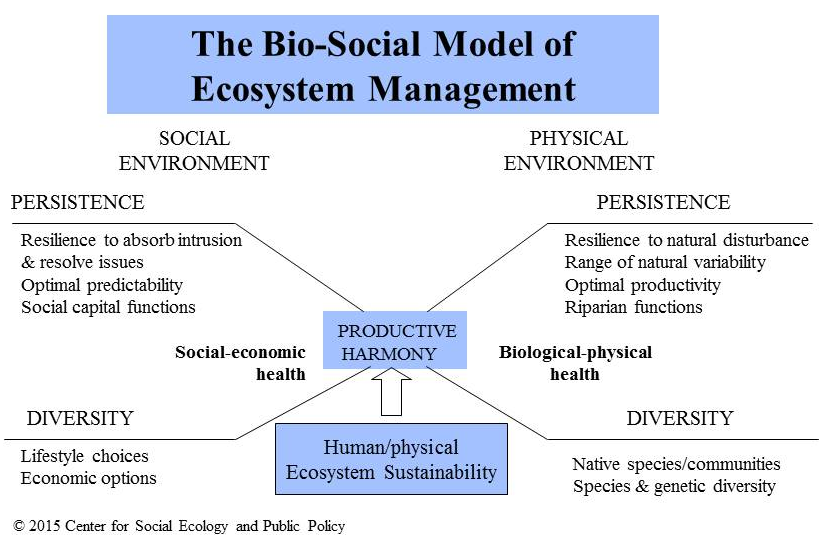
This model draws upon the National Environmental Policy Act (NEPA) that says it is the policy of the federal government when making environmental decisions to promote “Productive Harmony”—that balance between humans and nature. It suggests that both the social and physical environments need to have persistence and diversity in order to be sustainable. That means that humans are part of the ecosystem. Approaches to sustainability that focus on the technical or biological aspects will not be sufficient to avoid ecological decline—people and their behaviors are part of the equation and must be factored into sustainability programs. How do people understand and interact with their bio-physical environments? How do they take care of the land? How do we accommodate their knowledge of the land into decisions about future management? How do we make decisions to improve the health of the bio-physical environment in a way that fosters persistence and diversity in the human communities?

